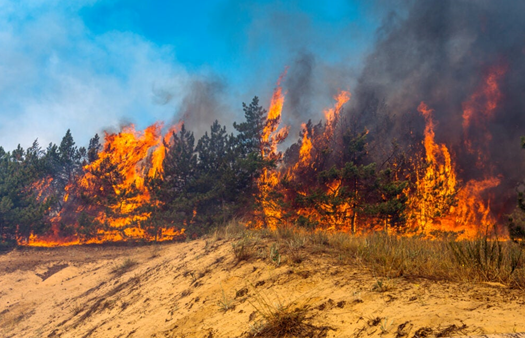Without action, unreported methane pollution from Saskatchewan could threaten Canada’s climate goals and create more fallout from climate change
By Ari Pottens and Scott Seymour
It’s no secret that the rampant, out-of-control wildfires which are devastating parts of Canada and creating toxic air quality conditions for millions of people, are exacerbated by climate change. This makes it all the more crucial to rapidly reduce the greenhouse gases behind the climate crisis.
In 2020, Canada’s federal government implemented new regulations to stem the methane emitted from the oil and gas industry — the leading source of methane in the country. The protections were intended to help cut emissions by 40% – 45% by 2025. Subsequently, the federal government significantly increased its methane ambition and set a 75% reduction goal by 2030.
But a new study is revealing some problems with the way Saskatchewan is managing emissions from a very specific type of oil production known as Cold Heavy Oil Production with Sand. It just so happens that a lot of gas, most of which is methane, also comes out during this process.
Rather than capturing that gas and using or selling it, much of it is simply released into the atmosphere unreported. Research published earlier this year revealed emissions from this process are four times higher than what companies report to the government. This is generating massive amounts of climate pollution and massive amounts of energy waste. According to the new research, this process has wasted nearly $40 million worth of gas since 2020. None of it was reported to the Canadian government.
These unreported emissions change what we know about Saskatchewan’s methane footprint. The research reveals that as a result of unaccounted-for emissions from CHOPS, Saskatchewan’s methane levels are actually 30% – 40% higher than what the government has been tracking. That’s a big problem because if the true amount of pollution were known to regulators, then oil and gas producers would have to do more to reduce emissions to comply with existing requirements.
Without action, unreported methane pollution from Saskatchewan could threaten Canada’s climate goals and create more fallout from climate change Share on XAnd while operators in Saskatchewan may appear to have achieved significant reductions, these are based on industry reported data which, time and again, has been proven to underestimate actual emissions. Even if Saskatchewan meets its 2025 target of 40% – 45% reduction in methane pollution, this new research notes that its methane intensity, methane lost per amount of methane produced, is around 9%, which is more than 40-times the emission target recently set in the United States, indicating that Saskatchewan still has plenty of work to do. Without better measurement, reporting and verification, it’s impossible to know how well policies are working or if we’re meeting our climate goals.
The recent heatwaves and horrific wildfires make it clear that governments need to take action to stop the climate crisis. The Canadian government is working to create a new set of regulations to reduce emissions by 75% by 2030. With ambitious regulations and funding to improve measurement for methane, Canada and its provinces can help rein-in a major greenhouse gas and slow the speed of warming.











